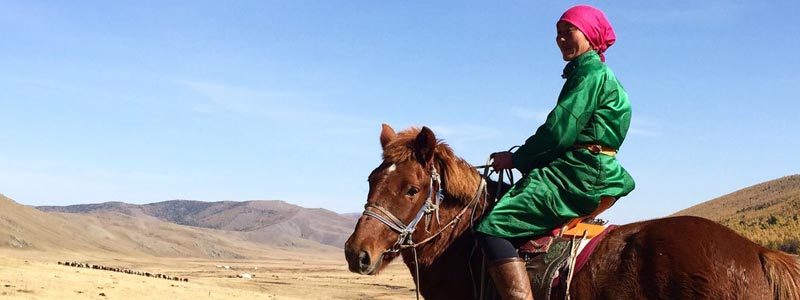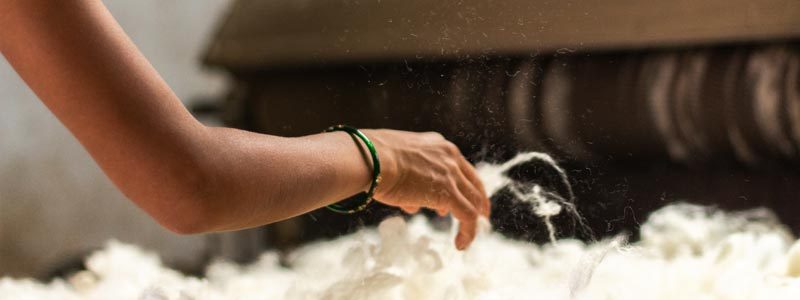Les fils de luxe peuvent avoir un effet important sur le changement climatique.
- Auteur/autrice de la publication :admin
- Publication publiée :avril 8, 2020
- Post category:Fils de luxe

At one of my latest trip, this time to Mongolia, I was able to see with my own eyes the effect of climate change on the pasture land due to the increased herds of cashmere goats.
Cashmere fibre is mostly sourced out of Mongolia and for a while under the radar. NGO’s such as Peta and newspapers as the Guardian are informing about the problem. In 2009, the World Bank warned of consequences on the land if the herds of cashmere goats continued to increase. Contrary to sheep, yaks and camels, goats do not only eat the grass but also the roots which by over-herding increases the desertification of the land. Add on top of that a cycle of summer drought and winter snow, very low temperatures and heavy snowfall, locally called Dzud. This together with overgrazing of goat herds over several years, resulting in desertification of 76.8% of the Mongolian territory.
There are a lot of brands, especially fast fashion brands, promoting cashmere. When we buy a pure or blended cashmere product, having this luxury very soft touch we do not think about the effect this can have on the environment. Cashmere products carry the feeling of luxury in its name. Cashmere is a precious commodity because it is combed from the underbelly of goats living in high altitude and it is extremely soft and fine. First, the industry’s rapid growth has degraded the average fiber quality. What happened is the herders, responding to the significant higher demand, increased their goat livestock with 66% over the last decade but also harvest older goats where the quality of the fiber is less and which lead to an overall decline of the quality of the fiber. As a result, the processing waste, which means the waste after the fiber is washed and carded increased considerably. Luckily the awareness is growing and programs are implemented. Not only are there different organizations who are helping like Sustainable Fiber Association (SFA) but also Green Gold, a project developed with the help of the Swiss Development for Corporations (SDC), where they not only advise and train herders to manage their livestock and pasture land in a better way but help them to integrate other luxury fibers as yak and camels. During several years studies were conducted and herders trained. Different management of the pasture land is implemented today, as training in combing in a more sustainable way the animals and separating the best part of the fibers while bringing it directly to the washing and carding facilities. Yak and Camels exist already in the Mongolian landscape and their fiber can bring additional income to the herders which do not affect the land. However, the solution is not so easy, since the cashmere fiber gives still a higher price then yak or camel fibers. But to avoid losing land to desertification a change has to be made and the herds of cashmere have to be managed in a more sustainable way.

Fashion Brands Have To Feel Responsible For Climate Change
A fashion or textile designer should design with the circular economy framework in mind and design with mono-materials, prioritize natural and non-mixed fibers, which will help and make the disassembly easier. This can increase the recycling of the used garments in new high-level yarns. Today a lot of wool and cashmere is recycled, especially in the Italian Prato area, where companies are specialized and delivered excellent results in making luxury recycled yarns.
Buy Less But Better And More Durable
As a final customer, we also have our role to play. Starting to buy less but buying better, buying in a conscious way. Prefer better quality which can be repairable and durable and stop the trend to decrease the lifespan of your clothing. Support brands who promote the true value of their products. All these little gestures, going back to a more responsible way of buying and using our clothing will also help to drive towards a cleaner textile and fashion industry and reduce climate change.
Written by Coty Jeronimus. This article was first published 13 December 2017 on Tasklab.
